Bonsai gardening has long captivated hobbyists and green thumbs alike with its unique blend of art, nature, and mindful cultivation. But have you heard about the rising trend in the bonsai world? We’re talking about super mini bonsai gardens – an even more compact and creative take on this traditional Japanese art form.
Here’s a snapshot of the written information we’ll be exploring:
- Selecting the right tree species is crucial for successful mini bonsai gardening.
- Utilizing the correct tools can significantly streamline your bonsai gardening process.
- Vital care aspects include watering, sunlight exposure, fertilization, pruning, and pest management to help your garden reach its full growing potential
- Tips on positioning your garden, integrating decorative elements, and arranging multiple mini bonsai trees.
Choosing the Right Tree Species
Factors to Consider
1. Climate Compatibility: Your chosen species should be compatible with the climate of your location. Some trees thrive in tropical conditions while others prefer temperate climates.
2. Growth Rate: Consider the growth rate of the tree. Some species grow rapidly and require frequent pruning, while others grow slowly and need less maintenance.

3. Size and Shape: The natural size and shape of the tree species can affect the final look of your mini bonsai. Choose a species that can be comfortably pruned and shaped to fit within your desired bonsai size.
4. Resistance to Diseases and Pests: Some tree species are more resistant to diseases and pests than others. Opting for such species can save you a lot of trouble in the long run.
Recommended Species
Here are some recommended species for your mini bonsai garden and their photos as reference:
Juniper
Junipers are hardy and adaptable and come in various sizes and shapes. They’re excellent for beginners due to their slow growth rate and high resistance to pests.
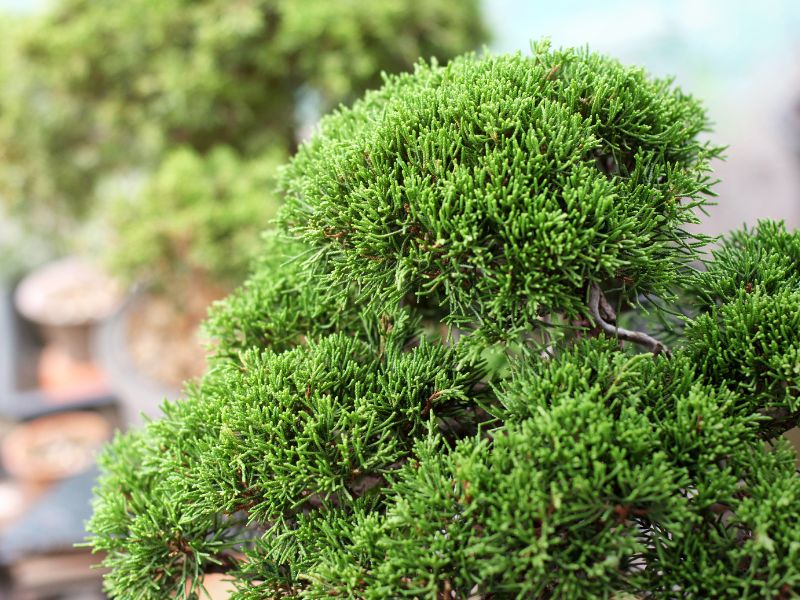
Ficus
Ficus trees are tropical species that thrive indoors. They have thick trunks and dense foliage, making them perfect for creating lush, miniature landscapes.
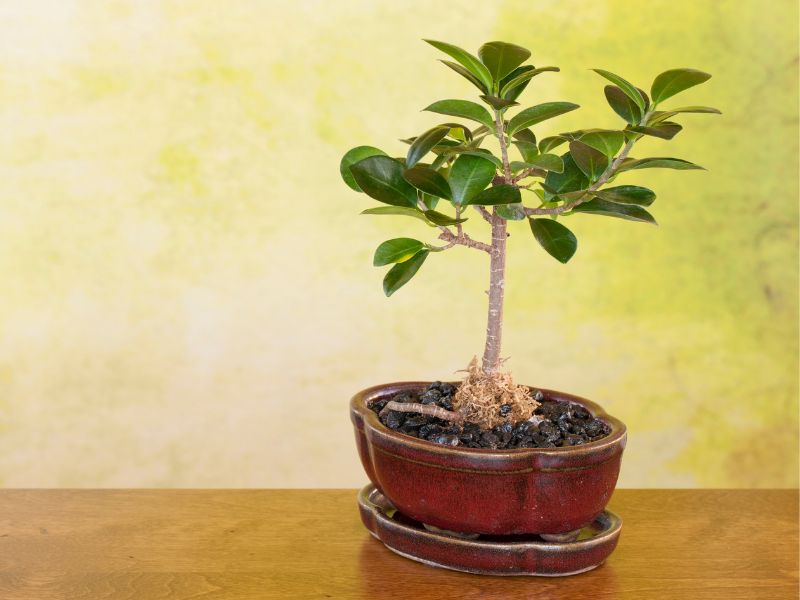
Elm
Elms are known for their beautiful leaf shapes and bark textures. They’re moderately fast growers and can adapt to a range of climates, making them a versatile choice.
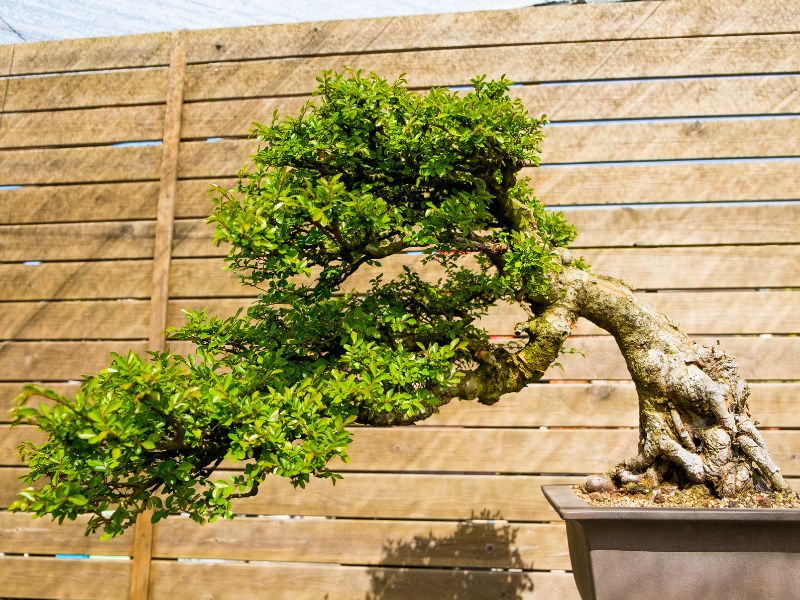
Pine
Pine trees are traditional bonsai favorites. With their distinctive needle-like leaves and rough bark, they lend a unique aesthetic to any mini bonsai garden.
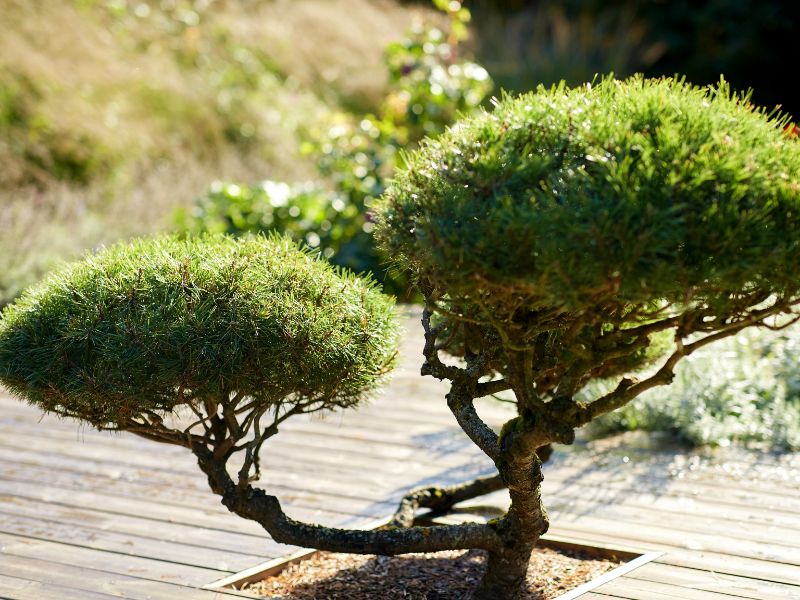
Essential Mini Bonsai Tools and Materials
Bonsai Shears
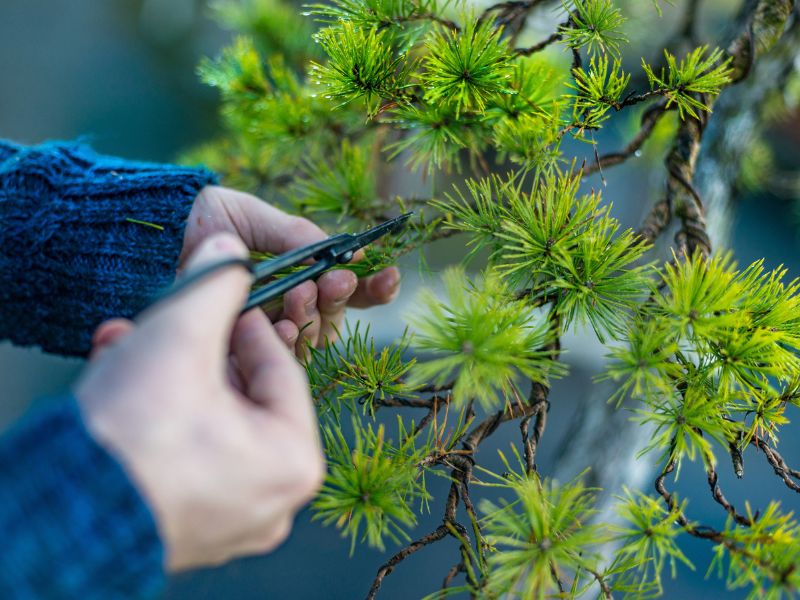
Bonsai shears are your go-to tool for most tasks in the world of bonsai gardening. They’re specially designed to make clean cuts without damaging the tree.
Shaping Wire
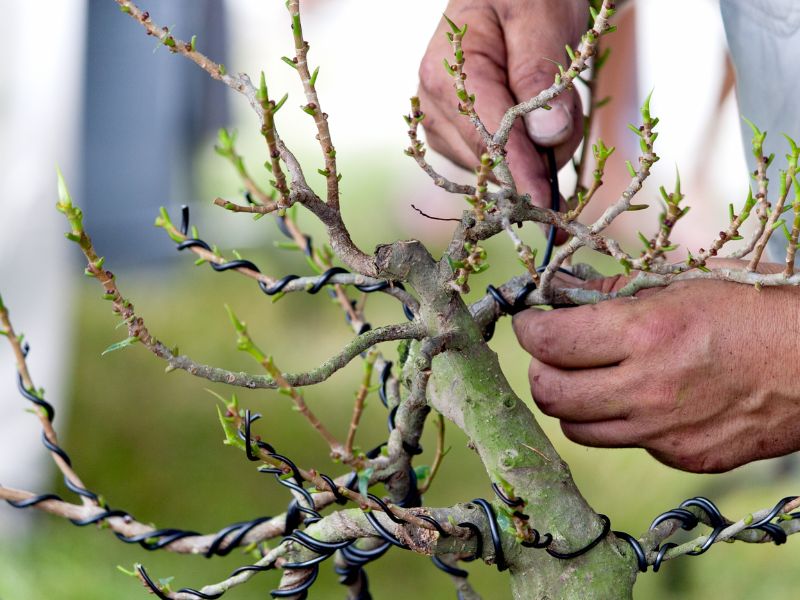
To shape your bonsai tree and guide its growth, you’ll need bonsai wire. Remember, cutting and wiring should be done with care to avoid injuring the tree.
Miniature Pot
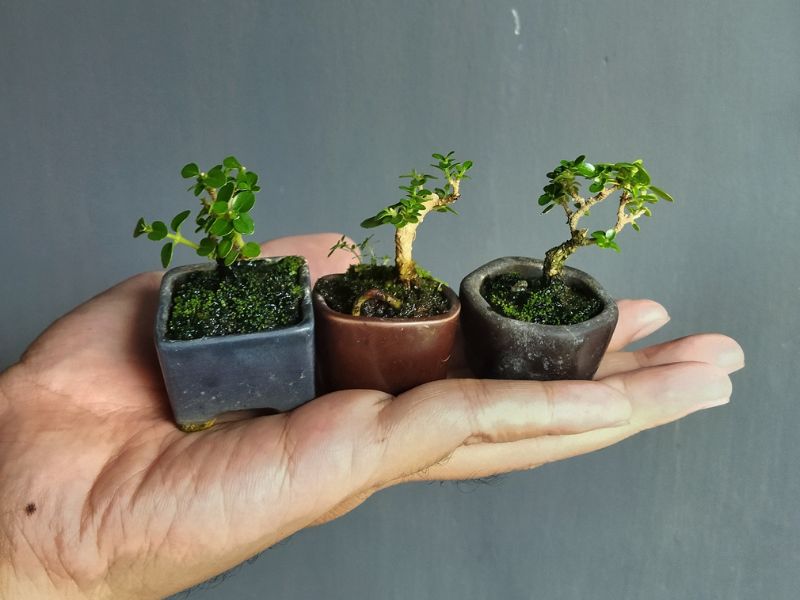
The pot is more than just a container for your bonsai to grow; it’s part of the overall aesthetic. Choose a pot that complements your tree’s size and style.
Bonsai Soil

Unlike regular garden soil, bonsai soil is specially formulated to provide optimal both water drainage and nutrient retention.
Proper Care and Maintenance
Watering and Sunlight

In mini bonsai gardens, watering your bonsai is more art than science. A good rule of thumb is to water the pot when the topsoil feels dry to the touch. As for sunlight, most bonsai trees, particularly in mini bonsai gardens, thrive with at least a few hours of indirect sunlight each day.
Fertilization
Bonsai trees need nutrients to be strong and healthy. Regular fertilization is essential, especially during the growing season.
Pruning and Shaping
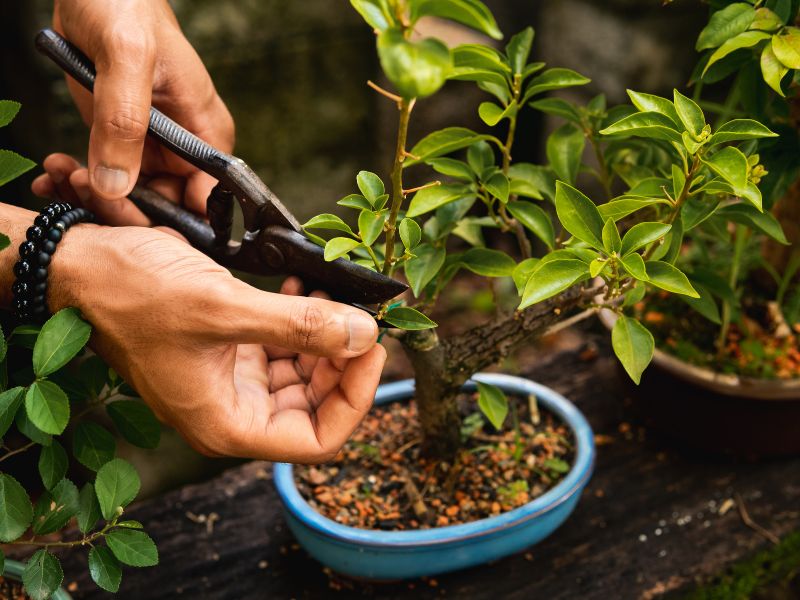
Pruning is crucial for maintaining your bonsai’s miniature size and desired shape. Regularly cutting back the branches, leaves, and roots using your bonsai shears. For shaping, use bonsai wire to gently guide the branches into position.
Pest and Disease Management
Even with the best care, your bonsai trees might encounter pests or diseases. Regularly inspect your tree for signs of trouble, such as discolored leaves or slowed growth.
Creating a Tranquil and Aesthetically Pleasing Display
Positioning Your Mini Bonsai Garden
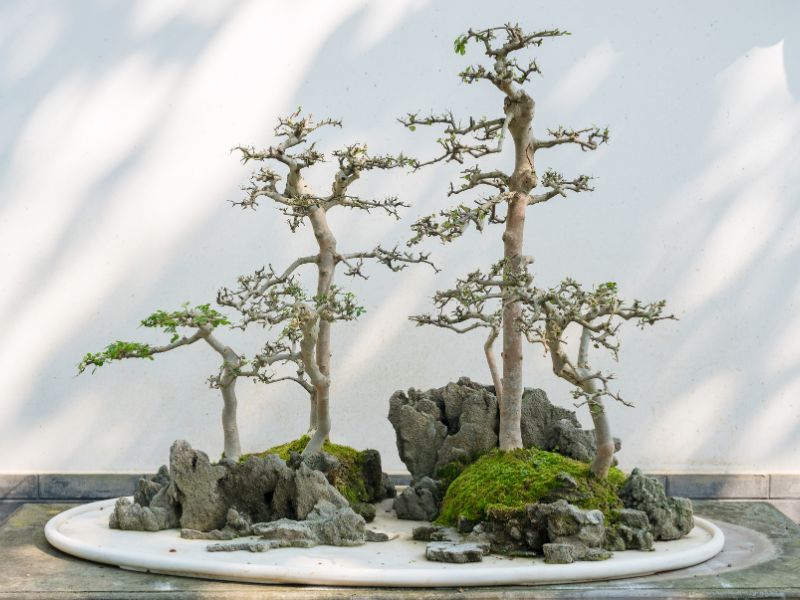
Where you place your mini bonsai garden plays a significant role in its appeal. Choose a location that gets adequate sunlight, but also consider the whole space and visual impact.
Decorative Elements
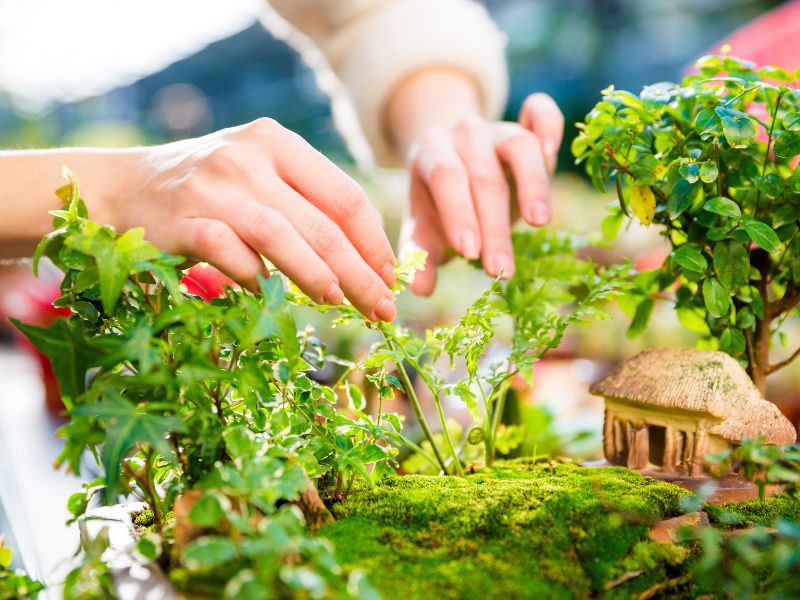
Incorporating decorative elements can enhance the natural beauty of your bonsai garden. Here are a few ideas:
- Stones: Well-chosen stones can add texture and contrast to your display. Larger stones can represent mountains, while pebbles can mimic a river bed.
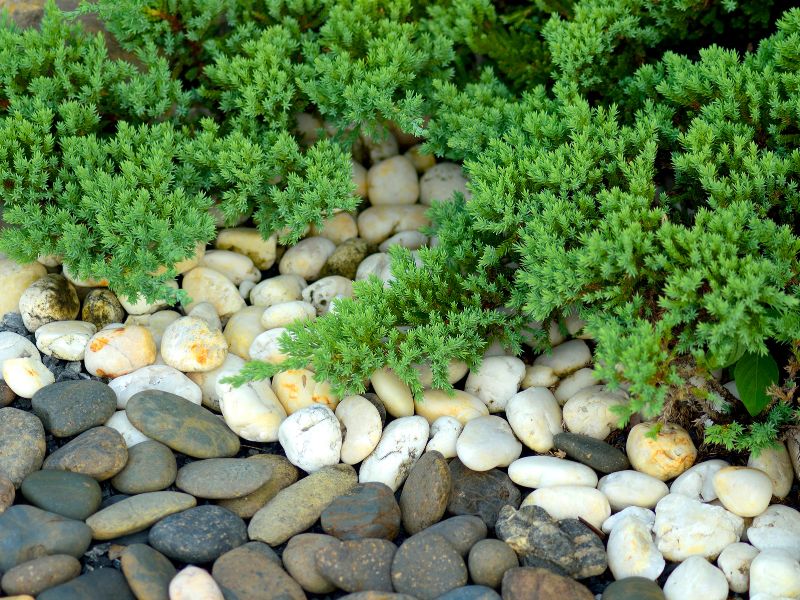
- Moss: Moss brings a touch of lush greenery to your garden, creating a miniature landscape that’s rich and vibrant.
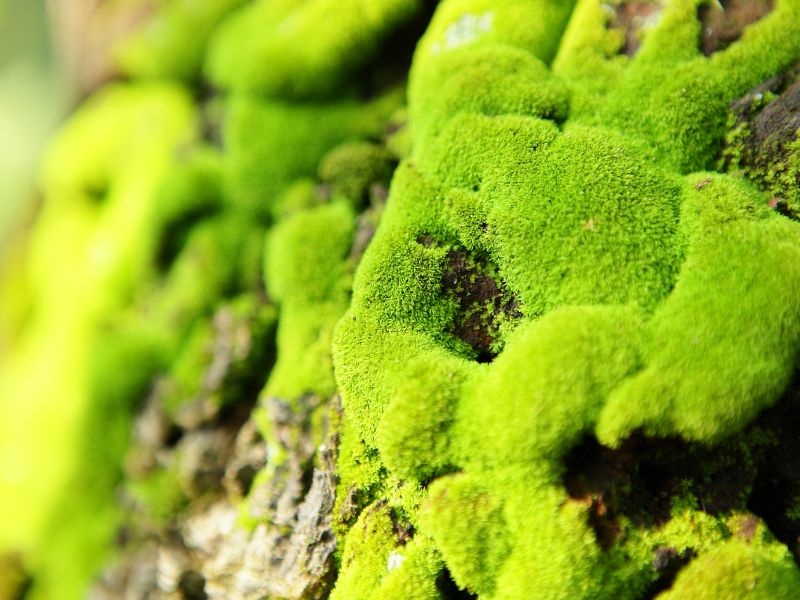
- Figurines: Tiny figurines, such as animals or miniature houses, can add a whimsical touch to your garden, making it truly one-of-a-kind.

Arranging Multiple Mini Bonsai Trees
If you’re cultivating multiple bonsai trees, think about the arrangement. Vary the heights, sizes, and species of your bonsai trees for visual interest.
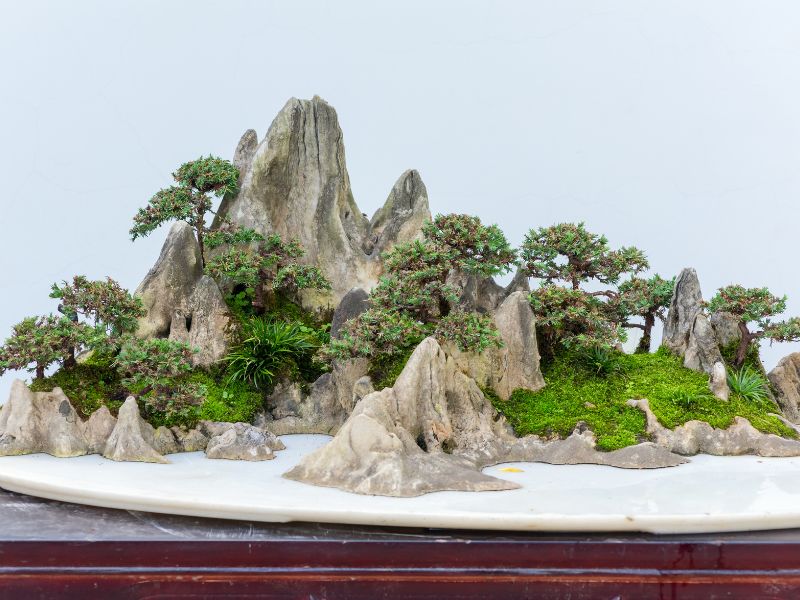
Final Thoughts
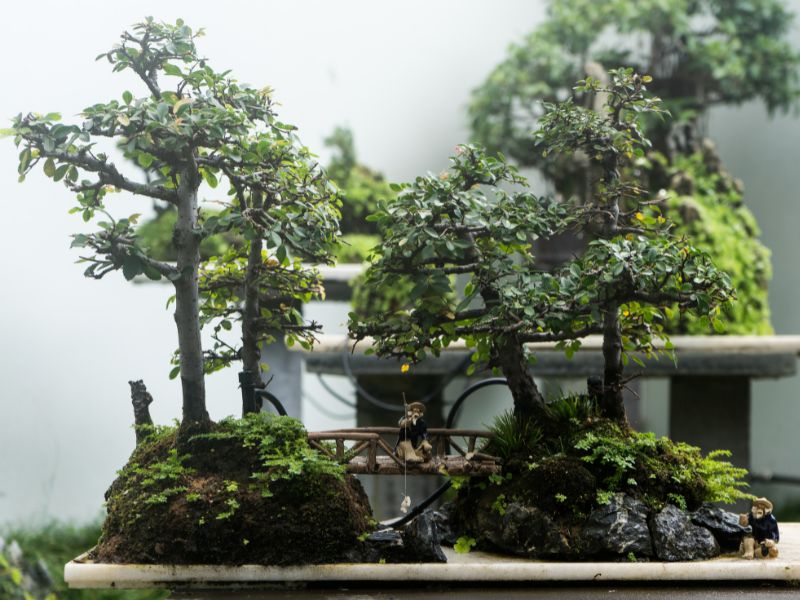
Creating and nurturing mini bonsai gardens is a journey of joy, patience, and discovery. It’s more than just a hobby—it’s a way to connect with nature, express your creativity, and find tranquility in your own space.
The benefits of mini bonsai gardening are manifold:
- Aesthetic Appeal: A well-crafted bonsai garden is a visual delight, transforming any corner of your home into a focal point of beauty and serenity.
- Therapeutic Value: The process of shaping and nurturing a bonsai tree can be incredibly calming and therapeutic. It helps you slow down, focus, and find peace in the rhythm of nature.
- Sense of Achievement: Watching a tiny seedling grow into a miniature tree under your care provides a deep sense of satisfaction and achievement.
This definitely requires time, patience, and a good bit of learning. It can be difficult at first, but the rewards—both tangible and intangible—are well worth it.
Every bonsai master was once a beginner. You too can cultivate a lush, tranquil garden that’s uniquely yours. So gather your tools, pick your tree, and embark on this rewarding journey.





0 Comments